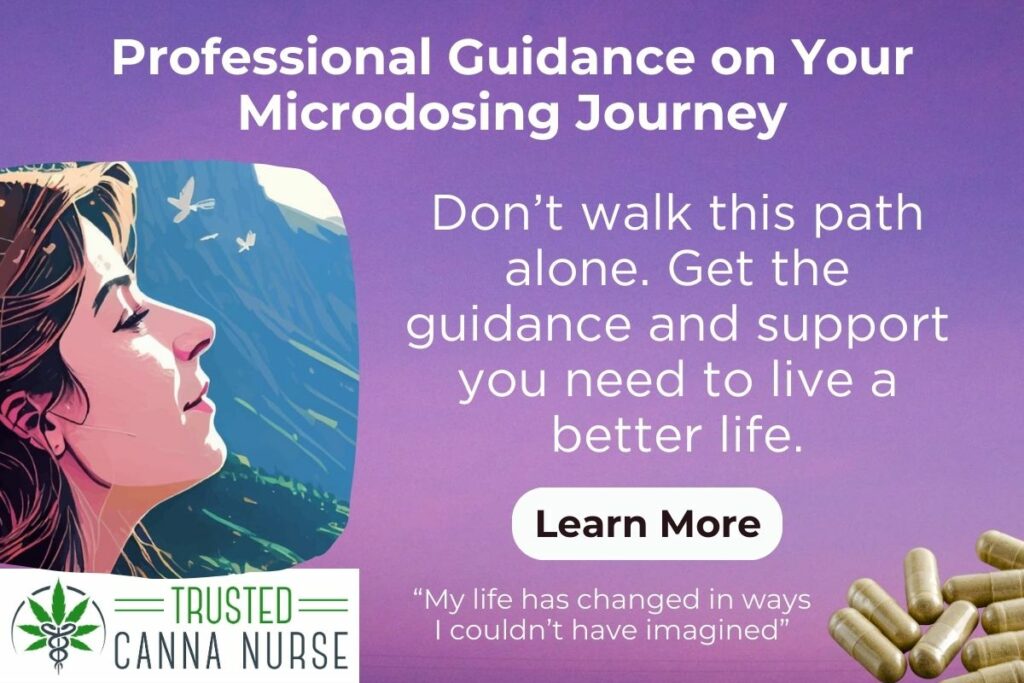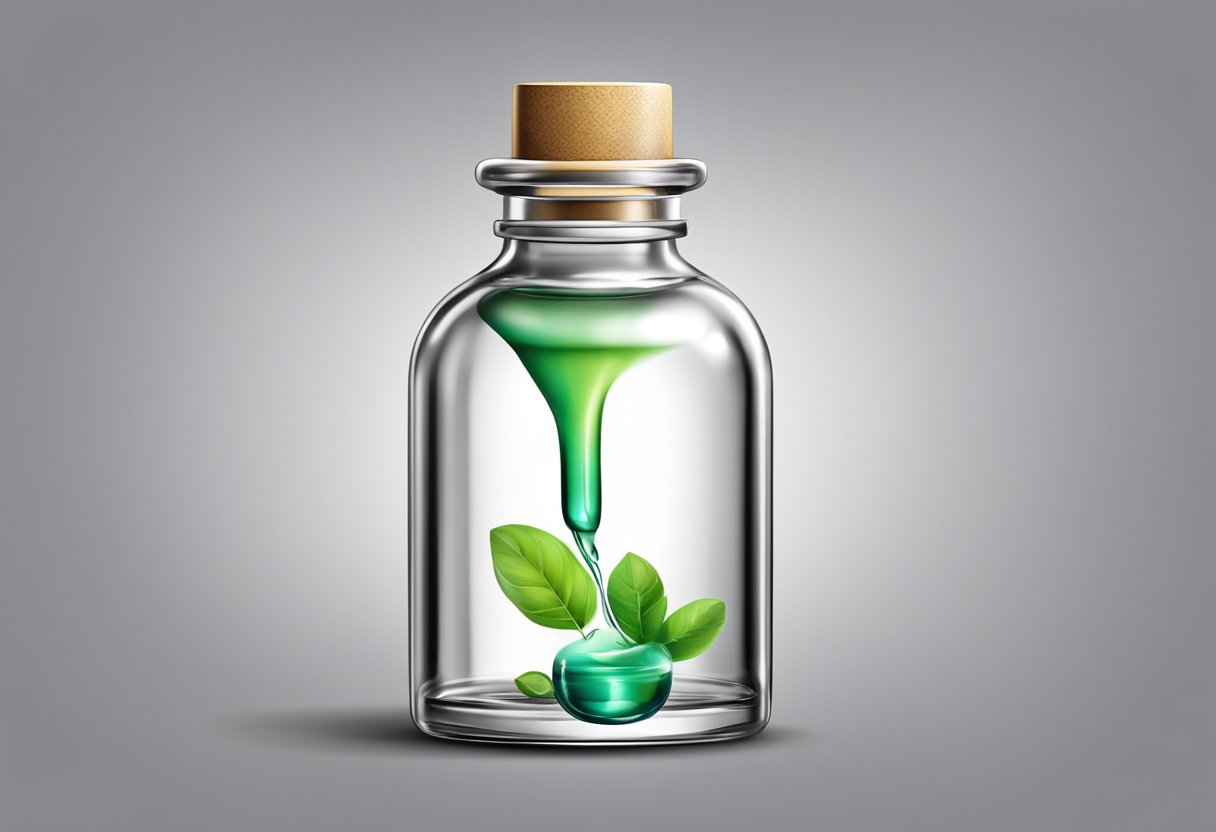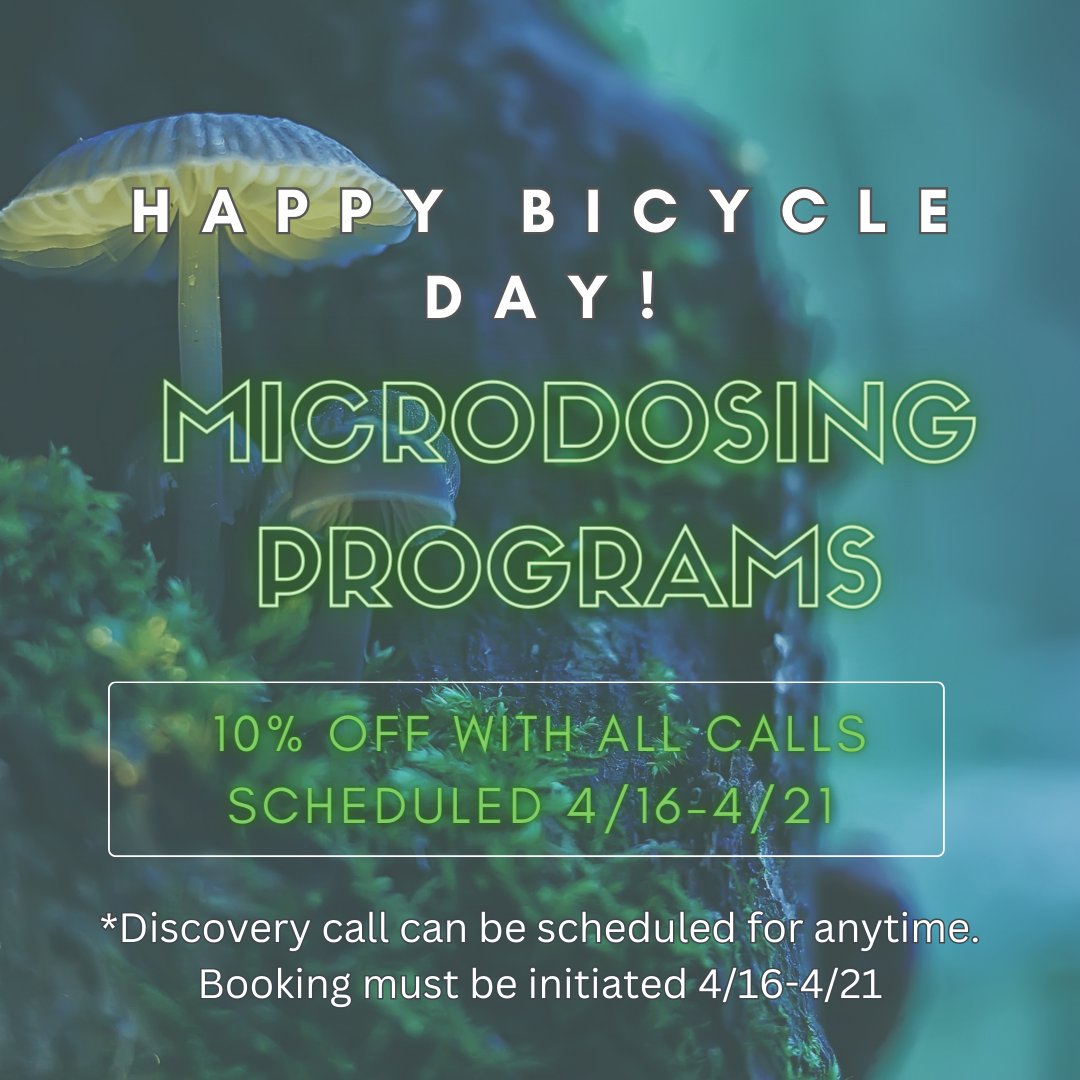Microdosing is a growing trend that involves consuming minute amounts of psychedelic substances to experience subtle benefits without the intense effects commonly associated with a full dose. Often used by individuals seeking to enhance creativity, productivity, and overall well-being, microdosing has garnered significant attention in various communities, including entrepreneurs and professionals in high-stress industries such as technology and finance.
The practice typically involves taking a fraction of the regular dose of a psychedelic substance, such as LSD or psilocybin mushrooms, which can potentially lead to improved mood, focus, and mental clarity. While microdosing has gained notable popularity in recent years, scientific research on its efficacy and potential risks is still limited. As interest in this practice continues to grow, more studies are required to better understand the full implications of microdosing on individuals’ mental health and overall well-being.
Key Takeaways
- Microdosing involves consuming small amounts of psychedelic substances to potentially enhance creativity, productivity, and well-being.
- Common substances used in microdosing include LSD and psilocybin mushrooms.
- Further research is needed to understand the full benefits, risks, and long-term effects of microdosing.
Understanding Microdosing
Microdosing is the practice of ingesting a small dose of a psychedelic or psychoactive substance, typically around one-tenth of a recreational dose. The intention behind this technique is to experience subtle yet beneficial effects without going through an intense hallucinogenic “trip” or overwhelming psychoactive experience.
Common substances used for microdosing include LSD and psilocybin (magic mushrooms). These are considered classic psychedelics, which are thought to have potential therapeutic effects when taken in smaller doses over an extended period. People often microdose to improve mood, boost creativity, reduce anxiety, and increase focus and productivity.
When it comes to determining the appropriate dosage for microdosing, it typically depends on the individual and the substance being used. Factors such as body weight, metabolism, experience with psychedelics, and individual sensitivity can all impact how a microdose affects a person. It is vital to start with a low dosage and gradually adjust based on personal reactions and comfort levels.
Microdosing is currently a popular topic within the worlds of science and mental health due to the potential therapeutic benefits it may offer. However, it’s important to note that further research is needed to fully understand the long-term effects and safety of this practice. In the meantime, it remains an intriguing method for those seeking to enhance their well-being and cognitive performance in a controlled and less intense manner.

Psychedelic Substances Used in Microdosing
Microdosing involves the consumption of small, sub-perceptual amounts of psychedelic substances, aiming to achieve subtle but noticeable benefits without the full-blown effects or side effects of a traditional psychedelic experience. This section will discuss the most common substances used in microdosing.
Psilocybin
Psilocybin is the active compound found in psilocybin mushrooms, often referred to as “magic mushrooms.” These mushrooms are commonly used for microdosing due to their natural occurrence and accessibility. Users report improvements in mood, creativity, and focus after microdosing with psilocybin.
LSD
LSD, or lysergic acid diethylamide, is a synthetic hallucinogen that is one of the more popular substances for microdosing. Known for its potent effects, even in small quantities, users choose to microdose with LSD for its potential to enhance cognitive function, creativity, and mood.
Cannabis
Cannabis, a naturally occurring plant, can also be used in microdosing. Microdosing with cannabis typically involves consuming a small and controlled dose of THC, the psychoactive compound found in the plant. This practice aims to achieve subtle therapeutic benefits such as anxiety relief, pain management, and stress reduction without inducing a strong psychoactive response.
DMT
DMT, or dimethyltryptamine, is a powerful psychedelic substance found in certain plants and animals. Although not as commonly used for microdosing as psilocybin or LSD, some users have reported experimenting with microdosing DMT for its potential cognitive and mental health benefits.
MDMA
MDMA, known as ecstasy or molly, is a synthetic psychoactive substance with stimulant and hallucinogenic effects. While not a traditional psychedelic, some individuals have experimented with microdosing MDMA to explore potential enhancements in mood, social interactions, and empathy.
Peyote
Peyote, a small cactus native to Mexico and southwestern Texas, contains the hallucinogenic compound mescaline. Although less common due to its scarcity and legal status, some users have reported microdosing with peyote or pure mescaline for its potential mood-enhancing and introspective qualities.
Microdosing and Mental Health
Depression
Microdosing has been explored as a potential therapy for depression. Some studies suggest that individuals experiencing depression have shown improvements in mood and mental health after microdosing psychedelics, such as psilocybin. The perceived positive outcomes might be attributed to the enhancement of cognitive performance and overall well-being.
Anxiety
Similarly, microdosing might help with anxiety management. A few reports indicate that individuals who microdose psychedelic substances experience reduced anxiety levels. However, it is essential to consider potential risks as some individuals may experience increased anxiety during the process. More research is needed to establish the efficacy and safety of microdosing for anxiety relief.
Bipolar and Schizophrenia
As of now, there is limited data available to suggest the effectiveness of microdosing in treating mental health conditions such as bipolar disorder and schizophrenia. Given the complex nature of these disorders, it is crucial to approach the use of psychedelics with caution. Further studies are required to investigate the potential benefits and risks associated with microdosing for individuals suffering from these conditions.
Stress Reduction
Lastly, stress reduction is another aspect of mental health where microdosing may show potential benefits. Anecdotal evidence from online communities suggests that microdosing can help individuals cope better with stress and develop improved health behaviors and habits. However, more research is needed to substantiate these claims and determine whether microdosing can be a reliable and effective stress-reduction strategy.
Claimed Benefits of Microdosing
Enhanced Creativity
Microdosing has been reported to boost creativity, leading to increased productivity and self-efficacy. This practice may help individuals by enhancing their connection with their environment, allowing them to think outside the box and tap into their creative potential. Users often describe experiencing a heightened sense of openness and free-flowing ideas that positively impact their problem-solving skills.
Improved Mood and Well-being
Many individuals claim that microdosing provides benefits to their overall mood and well-being. By taking small amounts of psychedelics, users have reported experiencing an improved mood and a heightened state of emotional balance. This sense of well-being can lead to lower stress levels and improved mental health, making it easier for them to navigate life’s challenges.
Increased Energy and Motivation
Microdosing has been linked to an increase in energy and motivation. Users often report feeling more ambitious, focused, and engaged in their daily tasks. This newfound energy and drive can lead to improved productivity, as individuals may more efficiently accomplish their goals and complete tasks with greater focus and concentration.
Boost in Cognitive Abilities
There is anecdotal evidence that suggests microdosing can enhance cognitive abilities such as memory, problem-solving skills, and overall cognition. By taking small amounts of psychedelics, users may experience an increase in mental clarity, focus, and decision-making capacity. This benefit has the potential to contribute to improved performance in various cognitive tasks, making it an intriguing area for future research.
Improved Social Interactions
Microdosing has also been reported to enhance users’ social interactions. Some claim that it allows for easier connections with others, leading to deeper and more meaningful conversations. This increased ability to communicate and connect with others can contribute to stronger interpersonal relationships and more positive social experiences.
Microdosing in Silicon Valley
Microdosing has gained popularity in recent years, particularly in the competitive environment of Silicon Valley. Professionals in the tech industry have turned to this practice as a means of enhancing cognitive performance and creativity. A microdose is a sub-perceptual amount of a substance, such as LSD or psychedelic mushrooms, that does not produce noticeable hallucinogenic effects. Instead, it is believed to heighten focus, improve mood, and boost productivity.
In Silicon Valley, microdosing has been adopted as a “productivity hack” to help individuals keep up with the fast-paced and highly demanding world of technology and innovation. Although scientific research on microdosing is still limited, anecdotal reports from users suggest that this practice may improve divergent thinking and problem-solving skills, which are essential attributes in the tech industry.
In an open-label natural study, researchers explored the effects of microdosing truffles on creativity. The results indicate a potential positive impact on divergent thinking, supporting the claims of microdosing users. However, it is important to note that more research is needed to validate these findings and fully understand the relationship between microdosing and cognitive enhancement.
Despite its popularity, microdosing is not without risks. The long-term effects of this practice are largely unknown, and there may be potential legal and health consequences. Some users have experienced adverse reactions, such as increased anxiety or negative mood changes. Therefore, it is crucial for individuals considering microdosing to be well-informed about the potential risks and benefits before incorporating it into their daily routines.
In conclusion, the practice of microdosing in Silicon Valley highlights the interest in finding alternative methods to boost cognitive performance and creativity. As technology continues to advance at an extraordinary pace, professionals in the tech industry will likely continue to seek innovative ways to stay competitive and optimize their productivity.
Side Effects and Risks of Microdosing
Possible Hallucinations
Even though microdosing involves taking small amounts of psychedelic substances, there is still a possibility of experiencing mild hallucinations. Users have reported alterations in their visual and auditory sensations1. While these effects are generally less intense than those experienced during a full-dose trip, they can still be uncomfortable and negatively impact a person’s daily functioning.
Headaches and Migraines
Some individuals may experience headaches or migraines as a side effect of microdosing. This could be related to the changes in brain chemistry induced by the use of psychedelics2. If these symptoms persist or become severe, it is vital for individuals to stop microdosing and consult a healthcare professional.
Potential Substance Abuse
Although microdosing is regarded as a potentially beneficial practice, there is a risk of developing a dependency or substance abuse issue. As with any drug, the regular use of psychedelic substances, even in small doses, could lead to increased tolerance and the desire for more frequent or higher doses3. Users should be cautious and mindful of their consumption patterns to minimize this risk.
Long-term Effects
The long-term effects of microdosing are still not well understood, given the limited research available4. While initial studies have shown some positive outcomes, such as improved mental health and creativity, it is essential to consider the potential risks and unknown aspects of microdosing, especially when it comes to prolonged use. As researchers continue to study this practice, it is crucial for individuals to stay informed and prioritize their safety.
Placebo Effect and Microdosing
Microdosing involves taking a sub-therapeutic dose of psychedelic substances, such as psilocybin or LSD, with the aim of improving mental health, creativity, and cognition. However, the placebo effect plays a significant role in the experience and outcomes of microdosing. The placebo effect occurs when an individual experiences positive results because they believe they are receiving a treatment, even if the treatment is inactive or a “dummy.” This phenomenon is important to consider when studying the benefits and safety of microdosing.
Some research suggests that the anecdotal benefits of microdosing can be attributed to the placebo effect. A study published in eLife found that the positive effects of microdosing were not due to the pharmacological action of the substance, but rather explained by the placebo effect. This raises concerns about whether the perceived benefits of microdosing are genuine or merely a result of participants’ expectations and beliefs.
Another study published in Nature highlights the importance of incorporating a placebo arm in microdosing research to differentiate between true effects and placebo effects. Including a placebo group can help discern if the reported benefits of microdosing are indeed above and beyond the influence of the placebo effect.
Although the placebo effect is a critical factor to consider, some studies argue that microdosing effects are not solely attributed to it. In a systematic review of low dose psychedelics, the authors acknowledge the potential contribution of expectation and placebo effects but emphasize that more research is needed to clarify the relationship between microdosing and the placebo effect.
In summary, the influence of the placebo effect on microdosing remains an important area of investigation. Researchers must carefully design and conduct studies to distinguish between the actual benefits of microdosing and the impact of participants’ expectations. This will provide a more accurate understanding of the safety, effectiveness, and potential applications of microdosing in various areas of life.
Legal Aspects
Microdosing involves consuming small, sub-perceptual doses of psychedelic substances such as psilocybin, LSD, and other controlled substances. Although it has gained popularity, microdosing remains subject to legal regulations in most jurisdictions.
In the United States, the Drug Enforcement Administration (DEA) is the primary agency responsible for enforcing the federal controlled substances laws. Under the Controlled Substances Act, many psychedelic substances, including LSD and psilocybin, are classified as Schedule I drugs, which means they are generally considered to have a high potential for abuse and no accepted medical use.
The legality of microdosing remains uncertain because it often involves the use of these Schedule I substances. State and local laws may also influence the legal status of microdosing, with some jurisdictions adopting more lenient approaches, while others maintain strict prohibition.
The healthcare provider’s role in microdosing lies mainly in providing guidance, information, and support to individuals considering or currently engaging in this practice. However, healthcare providers may face legal risks, given the controlled status of these substances. Engaging in or advocating for microdosing could lead to potential licensure or ethical issues for healthcare professionals.
The Food and Drug Administration (FDA) plays a role in regulating clinical trials and medical treatments involving controlled substances. Recently, there have been some advances in researching and understanding the potential benefits of psychedelic substances for mental health conditions such as depression and PTSD. In such cases, the FDA may authorize clinical trials involving controlled substances, including microdose trials. However, these regulated trials don’t necessarily provide a pathway for the general public to access microdosing legally.
Overall, the legal aspects of microdosing are complex and vary significantly depending on the specific substance, jurisdiction, and context in which it is practiced. Individuals interested in exploring microdosing should thoroughly research the legal framework in their region and consult with healthcare professionals to make informed decisions.

Role of Intention and Awareness in Microdosing
Intention and awareness play a significant role in the process of microdosing. Microdosing involves taking small doses of psychedelic substances, allowing users to experience potential benefits without the intense effects of a full dose. The purpose of microdosing often revolves around personal growth, cognitive enhancement, and well-being improvement. Being mindful of the reasons behind choosing to microdose is critical for a positive outcome.
One’s intention in microdosing varies from person to person. Some individuals aim to improve their creativity, focus, or emotional well-being, while others seek relief from anxiety, depression, or other mental health issues. Before embarking on this journey, it is essential to clarify one’s goals, as setting clear intentions can influence the overall experience. Mindful intention-setting allows users to view microdosing as a tool for personal development rather than a magic remedy for all their challenges.
Awareness and mindfulness, closely tied to intention, are equally crucial in microdosing. Due to the increased sensitivity to one’s environment and inner thoughts during microdosing, it is vital for users to be aware of their surroundings and emotional states. Being mindful of changes that occur as a result of microdosing can lead to better understanding and integration of those changes into daily life.
By bringing intention and awareness together in microdosing, individuals are more likely to have positive experiences, avoid negative outcomes, and achieve their desired objectives. As a result, the practice of microdosing becomes a complementary tool for personal growth and enhancement.
Future of Microdosing and Clinical Trials
Microdosing has gained considerable attention in recent years due to its potential benefits in enhancing cognitive functioning, creativity, and overall well-being. Although the concept of microdosing originated within the psychedelic community, it has since transcended its original context and entered mainstream discourse, particularly when discussing its potential applications in clinical trials and consciousness research.
Clinical trials play a crucial role in the development and approval of new drugs and therapeutic approaches. In recent years, there has been a growing interest in exploring the potential of microdosing in the context of drug development and its potential impact on future clinical trials. For instance, the use of microdosing has been suggested as an efficient way to evaluate the pharmacokinetics and pharmacodynamics of new compounds during early-phase clinical trials, prior to proceeding with higher doses and potentially reducing the risks and costs associated with failed clinical trials.
The Journal of Psychopharmacology has published research examining the use of psychedelics in a microdose regimen, emphasizing the need for further scientific investigation into this area. Some of the key research questions that need to be explored include elucidating the underlying neurobiological mechanisms responsible for the observed effects, optimizing dosage regimens, and establishing long-term safety profiles.
Dr. James Fadiman, a prominent researcher in the field of psychedelic studies, has been a strong advocate for exploring the potential benefits of microdosing in a rigorous and systematic manner. Fadiman’s work has helped increase the visibility and credibility of microdosing within the scientific community, paving the way for more collaboration between researchers from various disciplines…
Frequently Asked Questions
How does micro dosing differ from regular dosing?
Microdosing involves taking a small fraction (usually around one-tenth) of a typical recreational dose of a substance. This small amount typically does not produce the intense or full-blown psychedelic effects that one would experience with a regular dose. Instead, microdosing aims to provide subtle changes in cognition, mood, and perception without the overwhelming sensory experiences associated with larger doses.
What are the potential benefits of microdosing?
Some individuals who microdose with psychedelics report improvements in mood, focus, creativity, and overall well-being. These potential benefits may be related to the subtle changes in cognition, mood, and perception induced by a microdose. However, it is important to note that research in this area is still in its early stages, and more studies are needed to understand the full extent and reliability of these potential benefits.
Are there any risks or side effects associated with microdosing?
Microdosing with psychedelics may carry some potential risks and side effects, though typically fewer and less severe than those associated with regular dosing. Some users report increased anxiety, difficulty sleeping, or gastrointestinal issues, among others. However, research in this area is limited, and more studies are needed for a comprehensive understanding of the potential risks and side effects of microdosing.
What substances are commonly used for microdosing?
The most common substances used for microdosing are psychedelics, such as LSD (lysergic acid diethylamide) and psilocybin, the psychoactive compound found in certain mushrooms. Other substances, such as cannabis or certain nootropics, may also be used for microdosing purposes, though their effects may be different from those associated with microdosing psychedelics.
How do I determine an appropriate microdose?
Determining an appropriate microdose involves finding the right balance between experiencing the potential benefits and avoiding any negative side effects. For most individuals, a microdose is usually around one-tenth of a typical recreational dose. It is important to start with a small dose and adjust as needed, taking into account one’s personal sensitivity to the substance and individual preferences.
What is the typical frequency for microdosing?
A common microdosing protocol involves taking a microdose every three days for an extended period of time (a few weeks to months). This schedule allows for an adequate balance between experiencing potential benefits and avoiding potential negative side effects from overexposing the body and mind to a substance. However, it’s essential to remember that individual preferences and sensitivity may vary, and the optimal frequency for microdosing can vary from person to person.
Last Updated on January 28, 2024 by Megan Mbengue, BSN, RN, CHPN


